
My wife likes to move her large flowers pots around for variety and so they get equal amounts of sun. But the largest pots with dirt and plants are pretty heavy, likely around 60-70 lbs. Commercial plant caddies are usually kind of junky and virtually all have inadequate plastic furniture casters that don't roll right and quickly break.
Here is a design that virtually hides the stronger wheels, creates a platform look, and rolls much more easily than the commercial ones.
The most expensive part of this project will be the wheels. We picked up 4 screw-attached wheels at Harbor Freight for $10. They carry various sizes and types; we went with these 1 5/8 inch wheels:
http://www.harborfreight.com/1-5-8-eighth-inch-x-7-8-eighth-inch-light-…
If you choose larger wheels, they will no doubt roll a little easier over bumps but you will need to live with them being more visible or you will need to buy or cut wider boards than this design calls for to hide them.
A decision is also required as to what type of wood to use. This project will include two approaches, one simpler, sturdier, and does not require a table saw. The other approach is cheaper and sturdy enough.
For the simpler approach:
You will need 10 feet of 1 X 3 of the wood species of your choice. All boards are 2 1/2 inches wide with either approach.
My local Home Depot has 6 foot long X 6 inch wide X 5/8 dog-ear cedar fence slats for and incredible $1.39. One of these is enough for 1 plant caddy, with a little left over. There are 2 downsides to using this wood. First, it is rough wood; not finished on the sides. The other is its 6 inches wide and needs to be ripped to 2 1/2inch widths. But it's $1.39.
I am lucky and have both a table saw and power planer so neither of these issues caused me problems.
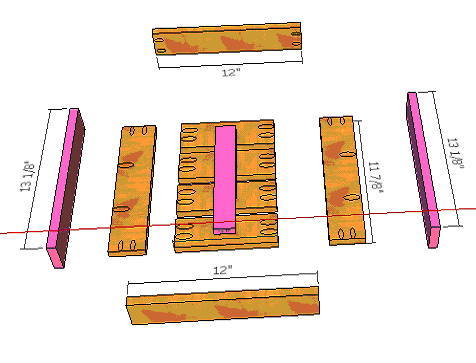
Preparation
You will need 1" coarse Kreg Screws for the cedar plank.
1 1/4 inch coarse screws may be better for the 3/4 lumber version.
4) @ 7 inch Inner boards
2) @ 11/7/8 side boards
2) @ 12 short outer boards
2) @ 13 1/8 long outer boards
1) @ 10 inch cross board
If you are using the simpler approach this first paragraph does not apply to you. If you are ripping the cedar slat, you will of course want to cut off the dog ears. You can plane or sand the sides or leave them rough. And you can then either cut each piece to length and then rip each or rip the whole thing (twice) creating two 2 1/2 inch boards.
For Everybody:
If you are using 3/4 inch dimensioned lumber the 13 1/8 dimension will need to be around 13 1/2 to account for the thicker 12 inch short outer boards. This dimension should be the only one affected by thicker wood. You might want to wait to cut this length until everything else is pocket screwed. These long outer boards do not require pocket screw holes so you can wait to measure your required length.
Pocket screw set up: Adjust your jig for the thickness of your lumber. If you are using the dimensioned 1 X lumber (at 3/4 inch thick), 3/4 will be your jig setting. If you are using the $1.39 cedar plank you will need to closely measure your board thickness after any planning and sanding and set the jig appropriately. After planing, my board thickness was just over 1/2 inch. I would use 1 inch coarse kreg screws for the cedar plank version but 1 1/4 inch coarse screws for 1 inch (3/4) lumber.
Please read through the entire plan and all comments before beginning this project. It is also advisable to review the Getting Started Section. Take all necessary precautions to build safely and smartly. Work on a clean level surface, free of imperfections or debris. Always use straight boards. Check for square after each step. Always predrill holes before attaching with screws. Use glue with finish nails for a stronger hold. Wipe excess glue off bare wood for stained projects, as dried glue will not take stain. Be safe, have fun, and ask for help if you need it. Good luck!
Instructions
Step 1
Step 2
Step 6
Step 8
Finally screw in the wheels. (Make sure to leave enough room for the wheel to turn a complete 360 degrees. Image below does not account for this) This part can be a little tricky as the screw holes for the wheels need to placed far enough into the boards to prevent breakout. It will be close, but it will fit with the suggested wheels
It is always recommended to apply a test coat on a hidden area or scrap piece to ensure color evenness and adhesion. Use primer or wood conditioner as needed.


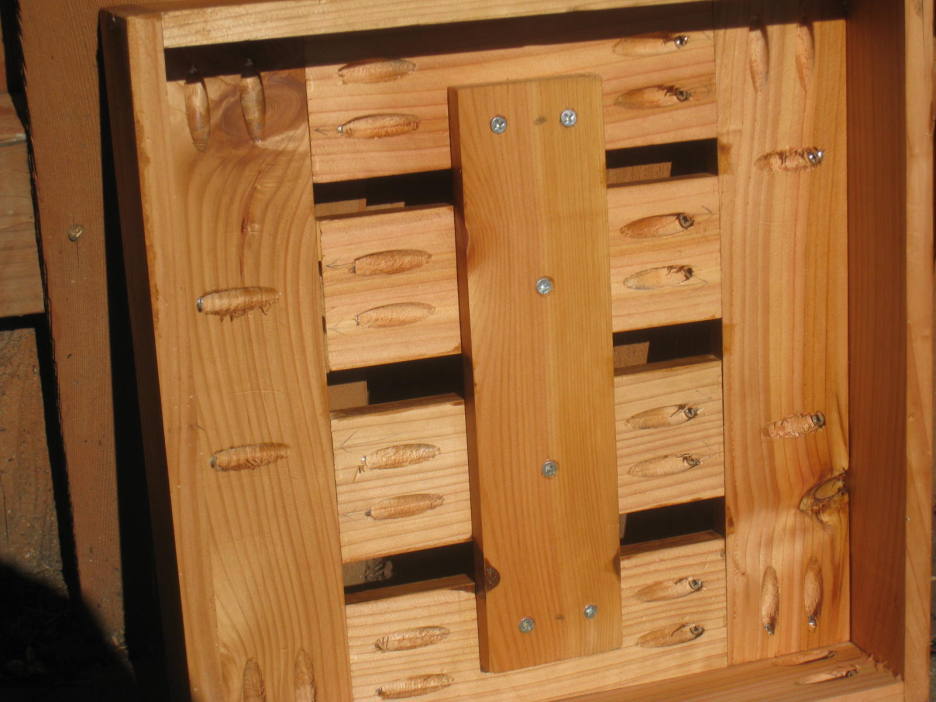









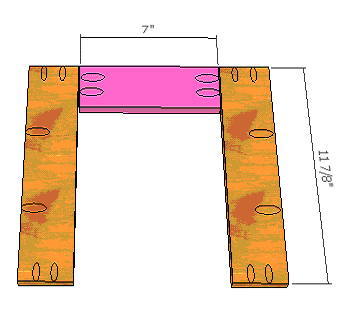
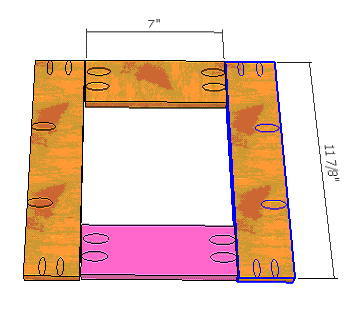

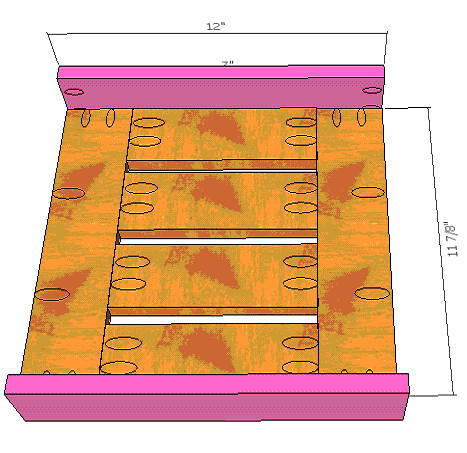
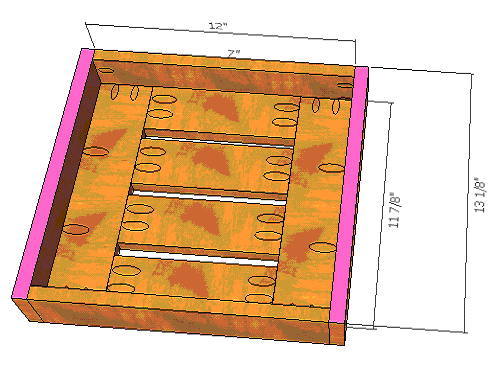


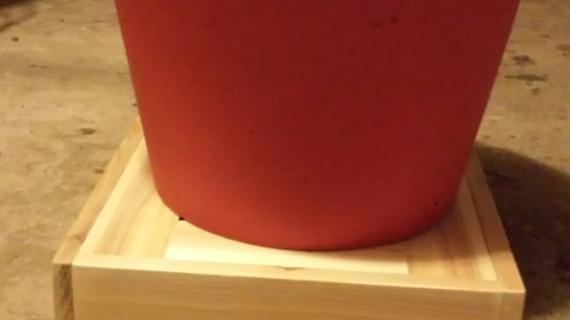

Comments
trufflette
Mon, 06/13/2011 - 14:03
I have been scratching my
I have been scratching my head wondering what to do with my plants that get limited sunlight. I have been needing this plan badly. Perfect for summer. Thanks.
bluejazz
Mon, 06/13/2011 - 14:31
If you have any issues let me know
I tried to be complete in the cut and assembly instructions, but if I left anything out or something is unclear, let me know. I'd be happy to help.
skaishadow
Tue, 05/13/2014 - 15:07
Great plans
Built this caddy this weekend as a Mother's day gift for my wife. The instructions were accurate and easy to follow. My 1st experience with pocket hole joinery was not optimal, but the good illustrations and pics helped to get great results- nice and square! I was impressed by the ease of assembly and rigidity of the final piece. The low profile gives my wife's BULKY Ikea pots a finished look. Would have been nice to specify the appropriate type and quantity wood screws needed for cross brace and casters. Wasn't a big deal, but could have bought all supplies at same time. Great work. Look forward to building more of your stuff in the near future.